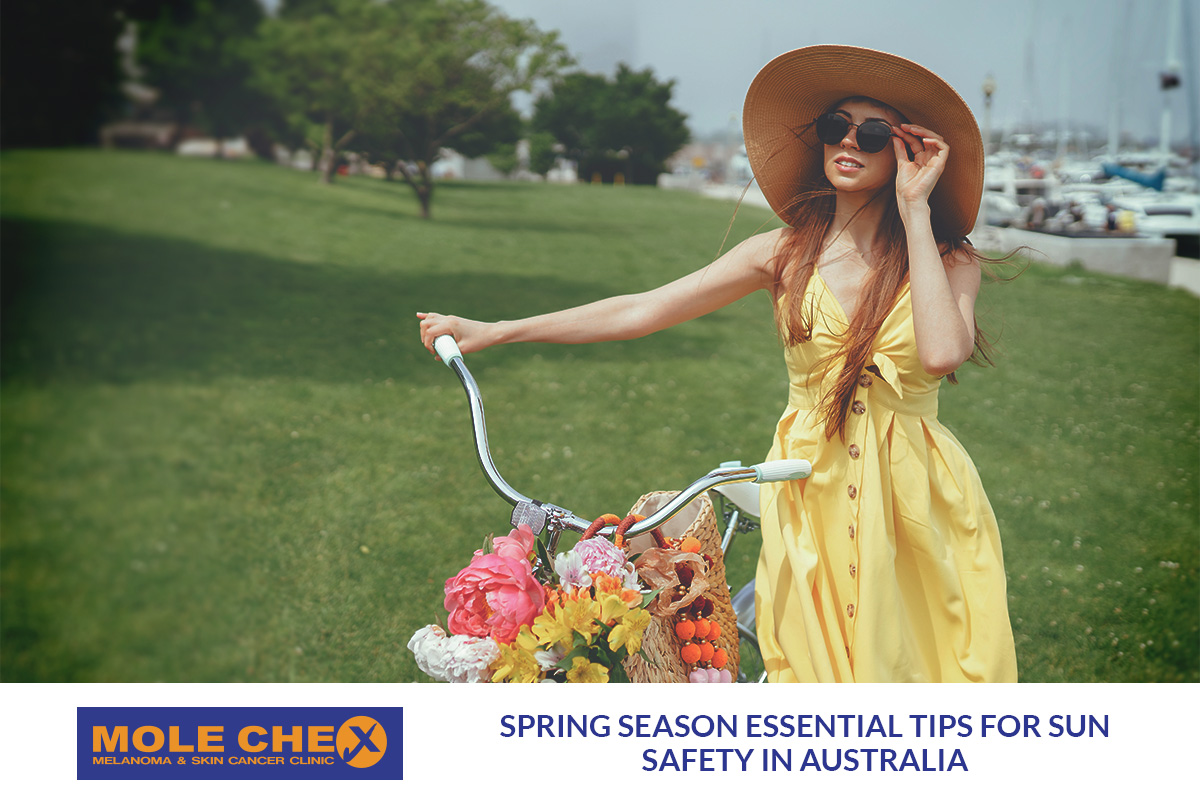Spring Season: Essential Tips for Sun Safety in Australia

Warmer weather and longer days usher in spring in Queensland, Australia, from September to November, beckoning us outdoors to relish in the season’s natural beauty and the activities it offers. Sun protection should always come first, even when enjoying the sun’s warmth. Protecting your skin from the harsh Australian sun, especially in the spring, is essential for avoiding skin damage and cancer. This post will provide you practical advice on how to maintain healthy skin this spring and will go over why sun protection is so important.
Key Points We Will Discuss:
- The importance of sun protection during the spring season in Queensland
- Risks associated with spring sun exposure
- Practical sun protection tips for spring
- How to choose appropriate clothing for spring sun safety
The Importance of Sun Protection During Spring in Queensland
Spring in Queensland marks the beginning of increasing temperatures and more intense UV radiation. Many Australians mistakenly think that sun protection is primarily a summer concern. However, UV levels in Queensland during spring can still be dangerously high, often reaching levels that require adequate sun protection. The UV Index in this region frequently exceeds 3 from September through November, meaning sun protection is necessary whenever you are outdoors.
During spring, outdoor activities such as beach outings, picnics, and hiking become more common. The UV rays can cause skin damage even on cooler or overcast days, as up to 80% of UV radiation can penetrate through clouds. Sand, water, and even grass can reflect UV rays, increasing your risk of sunburn and long-term skin damage.
The Risks of Spring Sun Exposure
Springtime sun exposure carries several risks, particularly due to increased outdoor activity and a general underestimation of UV strength. Prolonged or unprotected exposure can lead to sunburn, premature skin ageing, and significantly increase the risk of skin cancer, including melanoma, which is the deadliest form of skin cancer. Australia has one of the highest rates of skin cancer in the world, making sun protection a critical part of your springtime routine.
Practical Sun Safety Tips for Spring
Maintaining sun protection habits during the spring months is essential for long-term skin health. Here are some practical tips to ensure you stay protected:
- Use Broad-Spectrum Sunscreen: Apply a broad-spectrum sunscreen with a minimum SPF of 30 to all exposed skin, even on cloudy days. Reapply every two hours, or more frequently if swimming or sweating. Remember to cover often-missed spots like the ears, neck, and the tops of your feet.
- Wear a Hat: A wide-brimmed hat is ideal for providing shade to your face, neck, and ears. While caps or visors can shield your face, they don’t offer complete protection, so opt for a broad-brimmed style whenever possible.
- Wear Sunglasses: Protect your eyes with sunglasses that block 100% of UVA and UVB rays. UV exposure can harm your eyes and contribute to conditions like cataracts, so choose sunglasses with UV protection labels.
- Seek Shade During Peak UV Times: The sun’s UV rays are most intense between 10 am and 4 pm. Whenever possible, stay in the shade or indoors during these hours. When outside, use umbrellas, trees, or other forms of shade to protect yourself.
- Check the UV Index Daily: Before heading outdoors, check the UV Index for your area. If the index is 3 or higher, take extra precautions by applying sunscreen, wearing protective clothing, and seeking shade.
Spring Clothing Tips for Sun Safety
Choosing the right clothing can be an effective barrier against UV radiation. Here’s how to select sun-smart clothing for spring:
- Lightweight Long-Sleeved Shirts and Pants: Opt for long-sleeved shirts and pants made from tightly woven fabrics. Lightweight materials that breathe well can keep you cool while providing adequate protection. Fabrics such as cotton or specially designed UV-protective clothing are ideal.
- Layering for Flexibility: Queensland’s spring weather can be unpredictable, with cooler mornings and warmer afternoons. Layering your clothing not only provides sun protection but also allows you to adjust to temperature changes throughout the day. A lightweight jacket or a shawl can offer added protection when needed.
- UPF-Rated Clothing: Consider investing in UPF-rated clothing, which is specifically designed to block UV radiation. UPF (Ultraviolet Protection Factor) garments provide extra protection for outdoor activities like gardening, hiking, or beach outings.
- Sun Protective Accessories: Don’t forget accessories such as a wide-brimmed hat and UV-blocking sunglasses. You can also use scarves or shawls to protect your neck and shoulders from sun exposure.
Conclusion
Spring in Queensland is a beautiful time to enjoy the outdoors, enjoy the sunshine responsibly and make sun safety a habit to protect your skin for a lifetime of healthy outdoor fun. Remember, Molechex is here to support you in maintaining healthy, protected skin every step of the way. Sun safety includes using sunscreen, wearing appropriate clothing, and being aware of UV levels. Spring in Queensland is a beautiful time to enjoy the outdoors, but it’s important to remember that sun safety is a year-round commitment.
Learn more by reading other articles :
